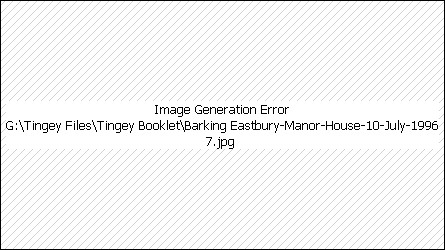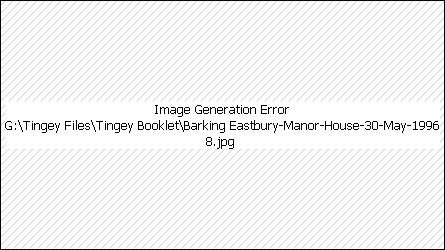Barking and District Historical Society
Main menu
- Welcome
-
Latest News
- Next Talk
-
Chairman's Notes
- May 2016
- April 2016
- March 2016
- February 2016
- December 2015
- November 2015
- October 2015
- September 2015
- June 2015
- May 2015
- April 2015
- March 2015
- February 2015
- December 2014
- November 2014
- October 2014
- September 2014
- June 2014
- May 2014
- May 2014 AGM
- April 2014
- March 2014
- February 2014
- December 2013
- November 2013
- October 2013
- September 2013
- June 2013
- May 2013
- April 2013
- March 2013
- February 2013
- December 2012
- November 2012
- October 2012
- September 2012
- June 2012
- May 2012
- April 2012
- March 2012
- Notes & Queries
-
What's On
-
Programme
- Programme 2016/2017
- Programme 2015/2016
- Programme 2014/2015
- Programme 2013/2014
- Programme 2012/2013
- Programme 2011/2012
- Talks 2014/2015
- Talks 2015/2016
- Talks 2016/2017
- Events
-
Programme
-
The Society
- About BDHS
- Barking Visit 1935
- English Heritage Partner Award
- Membership
- History of Society
- 80th Anniversary Talk
- 80th Anniversary Display
- Officers
- First Members
- Constitution
- Contacts
- Chronology
- Newslettter Contents
- Chairman's Reports
- Accounts
- Equal Opportunities Statement
- AGM Reports
- Publications for Sale
-
Articles
- Reminiscences
-
Barking & Dagenham
- Austin's
- Barking Brewery
- Barking Sewage Works
- Barking Signal Box
- Christmas Memories
- Contrasts
- Coronation Memories
- Dagenham Town Show
- Movers Lane Estate
- Evacuees
- Hospital
- Our Borough's Rich Past
- Nepton Charity
- Some Barking Lives
- St.Margaret's Church
- Some VC Heroes
- What's beneath our feet?
- Tom White's Interviews
- Tuck Postcards
- Yorkshire Regiment
-
People
- A-D
- E-K
- L-R
- S-Z
- Food
- Sport
-
Vic's Memories of Barking
- Barking Cinemas
- Barking Park Annual Fair
- The Dilema of Immigration
- Driving
- Food Watching
- Great Smog
- A Musical Journey
- National Service
- Our Street
- The Pesci Story
- Schooling in Barking during the forties and fifties
- Theatre
- Time for Revival?
- A Town Hall Mystery
- Transport in Barking
- Trains
- A Wartime Childhood
- Wheels of Our Time
-
Pictures
-
Barking
- Barking A-D
- Barking E-K
- Barking L-R
- Barking S-Z
- Barking Park
-
Churches
- All Hallows by the Tower
- Dagenham Central Hall
- Roman Catholic Church
- St.Alban's Becontree
- St. Margaret's
- St. Mary's Becontree
- St. Patrick's
- St. Paul's Barking
- St. Thomas' Becontree
- St. Mary's Ilford
- Disasters
- Entertainment
- Eastbury House
- Outings
- Becontree
-
Chadwell Heath
- Chadwell Heath A-D
- Chadwell Heath E-K
- Chadwell Heath L-R
- Chadwell Heath S-Z
-
Dagenham
- Dagenham A-D
- Dagenham E-K
- Dagenham L-R
- Dagenham S-Z
- East Ham
- Ilford
- Members' Pictures
- Public Houses
- Valence
- Frank Tingey's Drawings
-
Barking
- Links
Frank Tingey's Drawings
Frank Tingey’s Drawings

2014

Frank & Clem Tingey
St. Margaret’s Church, Barking 1990

Contents
Front Cover: Barking Curfew Tower
Inside Front Cover: Frank & Clem Tingey 1990
Title Page
Foreword
Contents
Francis J. H. Tingey 1917-
Frank’s Art
Barking
Cambridgeshire
Essex
Nothumberland
Nottinghamshire
Oxford
Suffolk
Sussex
Yorkshire
Inside Back Cover: Origanum ‘Barbara Tingey’
Back Cover: Great Warley Church
-
Foreword
In the spring of 2013 Mrs. Dorothy Lockwood, John Blake and I were discussing ideas to celebrate the Barking and District Historical Society’s 80th anniversary in 2014. One suggestion was to produce a commemorative booklet. I suggested that we could perhaps reproduce some of Frank Tingey’s delightful pen and ink line drawings. Frank was a local architect and a highly accomplished artist. He produced many beautiful and distinctive sketches which he often reproduced for use as Christmas cards, notelets and tea towels.
Dorothy and John agreed it would be a fine tribute to Frank to make his artwork more accessible to a wider audience, together with a short account of his life. His drawings, as would be expected from a professional architect, show his love for old buildings, particularly churches and domestic architecture. Frank’s drawings show great insight and imagination. He could recreate scenes such as the heyday of Barking Abbey in 1500 or the 1762 wedding of Captain James Cook.
Thanks are especially due to Mrs. Lockwood for her complete support and generous commitment to this project. She and her late husband Bert were long-
Finally, Frank’s pictures are largely self-
Bill George 1st August 2014
Francis John Herbert Tingey A.I.A.A., A.I.A.S.
14th April 1917 -
Frank was born on 14th April 1917 in Bayswater, the only child of Francis Hall Tingey (18th September 1890 -
The family moved to Barking in 1930 where Frank's father worked in a tobacco factory in Barking Road. By 1935 they were living at 4 Ventnor Gardens, opposite Barking Park. Frank attended Park Modern School, where he took a keen interest in playing rugby. then studied at Barking Abbey Grammar School until he left in 1934. Frank took a keen interest in his old school, became a life member of the Old Barkabbeyans Association and always avidly read their magazine.
Frank enrolled as a student with the Royal Institute of British Architects in 1943. He qualified as an architect in 1949 when his submitted thesis earned him a distinction. Frank also practised as a surveyor and went on to design the Grange Farm complex in Chigwell and the Kitsons Factory in the Barking Road. His practice was known as Tingey Associates. Frank was living at 4 Ventnor Gardens in the 1950’s. In 1956 he had an office at 29A Longbridge Road. In the 1970’s he was living at Lyndhurst Gardens. He was a very intelligent and gifted man. Frank was passionate about art and continued drawing his beautiful Christmas cards, depicting scenes in Barking and Essex – until fairly recently. His beautiful watercolour and pen and ink sketches are well known and will remain a testimony to his ability. Frank was also a keen cyclist and had a particular fondness for Yorkshire and the Lake District. He would often take his bicycle on the train, sometimes sleeping under hedgerows, so that he could explore countryside. Frank had a wonderful memory and could instantly recall the numbers of all the B Roads and the cost of rail journeys.
Frank took a keen interest in his local community and played a full part in the Barking Rotary Club and Historical Societies. Mr. and Mrs. Tingey joined the Barking and District Historical Society in 1986. Frank could be relied upon to give constructive comments on various matters that arose. He was a member of the Barking Arts Council and helped organise the Barking Pageant. Frank was always reliable. Until 10 years ago he was still giving tours of Eastbury House.
Frank married Joyce E.F. Pratt (1922-
Frank was a loving husband, a caring and considerate step father and grandfather, a loyal friend and a kind and honourable man, greatly loved by all who knew him. He sadly passed away peacefully on 24th January 2012, aged 94, at King George Hospital. Funeral Service took place on Monday 6th February 2012 at 12.30pm in a snow blanketed Upminster Cemetery. The dignified service was taken by Canon Dave Wade and included a tribute to Frank prepared by Clem’s daughter Jennie, with the help of Dorothy Lockwood. Twenty two family and friends braved the inclement weather to pay their respects and celebrate Frank's rich fulfilled life. His mortal remains were laid to rest in the orange brickearth at Corbetts Tey cemetery.


also happy experimenting with shading and shadow to produce, producing different effects. This is shown to good effect with Eastbury House and Grassington Chapel. Stippling is used in the Brinkburn Priory and Burnsall River Wharf sketches.


Two variants of Eastbury House sketch with different shading and trees removed
In this selection no less than five of the ten churches sketched have a dedication to St. Mary. This apparent bias may reflect their use as Christmas cards.
One coloured sketch of Warley church has been included in this selection. Frank issued this drawing in both plain and coloured states. Although most of the line drawings were executed in fine black ink some were issued in sepia.
We know that Frank was a keen photographer of places of interest. He would then turn his photographs into his own very distinctive pen and ink drawings which he often used for his Christmas cards until fairly recently.
Frank’s was passionate about art and his earlier sketches capture a lost countryside of quite lanes, thatched cottages, smoking chimneys and village churches at the centre of their communities. Although some of the scenes Frank sketched have long since disappeared many remain and it is fascinating to compare his historic images with their present appearance. It is hoped this short appreciation of Frank Tingey and his art will make him and his work readily accessible to a wider audience and encourage interest in aspects of architecture and our beautiful towns and countryside. Frank would surely have approved of these aims.

Barking Abbey
Barking Abbey, which lies just to the north west of St. Margaret’s church, was founded about 666AD by St. Erkenwald, Bishop of London. The present layout records the 12th century building. By the time it was dissolved by Henry VIII in 1539 it was the most important nunnery in England. The Abbey was pulled down in 1541 and the building materials were recycled. The site was investigated by the 18th century antiquary and Lord of the Manor, Smart Lethieullier (1700-

Curfew Tower
The Curfew Tower is the only surviving Abbey building. It was built about 1460 and has been extensively repaired. It has two storeys. The lower floor forms a gateway, originally into the Abbey precinct, but now the churchyard. Inside, on the east wall, is a worn and damaged finely carved rood, or crucifix, dating from about 1150AD. The Curfew Tower is an iconic Barking building and figures in various coats of arms.


St. Margaret’s Church
This Grade 1 listed building dates from the 1200’s. The Church Centre was erected in 1991. He produced an impression of the church and abbey in 1500; another showing Captain James Cook’s marriage in 1762 and a drawing of the church and Curfew Tower sketched in 1976. Frank’s love of the church is clearly shown in his drawings which were reproduced as popular notelets and a tea towel.


Eastbury House
Frank had a long term passionate interest in Eastbury where he served as a tour guide for many years. The house probably dates from the 1550’s and was built for the mysterious Clement Sisley. The property was saved from destruction in the 1840's and again in 1918. Fortunately it was acquired by the National Trust who carried out extensive repairs to ensure the survival of this beautiful Elizabethan red brick house.

Barking Manufacturers’ Association
This 1958 sketch shows two, now demolished, mid-
Cambridgeshire Images

Little St. Mary’s Lane, Cambridge 1950; sketch dated 1992
A planning document issued in 2006 described this Lane as "an ancient street with a long and chequered history". Little St Mary's Lane dates back to at least 1300AD. It was formerly home to the bargees who brought corn and coal along the river to the Mill Pool but by the late nineteenth century college servants mainly occupied the dwellings. Today the lane has been gentrified and is a quiet, mainly residential street in the heart of Cambridge. The highly decorative gas lamps, astutely observed and drawn by Frank, are Grade II listed. The dominating spire is part of the Emmanuel United Reformed Church, Trumpington Street which was built in 1875 to a design by the architect James Cubitt (1836-

St. Mary and St. John the Evangelist Church, Hinxton, Cambridgeshire
The medieval parish church of St. Mary and St. John dates from about 1200 when the chancel, nave and tower were constructed of flint and rubble with some Barnack limestone and clunch [hard chalk] dressings. The south aisle and chapel were added in the 1300’s. The church is in the Early-

Hinxton Mill
This picturesque small clapboard watermill straddles the River Cam as it flows northward through the village. Although the present mill was built in the seventeenth century, it is almost certainly the site of the mill mentioned in the Domesday Book of 1086 as being "worth 8 shillings" [40p]. The mill, used for grinding corn, ceased operation in 1955 and fell into disrepair. The cottage, although occupied by the son of the last miller, was then almost derelict with no mains water supply and a roof leaking in a dozen places. The mill was restored in the 1980’s and is open to visitors. The cottage is now a private dwelling. Frank has captured the tranquillity of this special place with the watermill’s reflection in the still water of the mill pool.
Essex Drawings

Blackmore – Priory Church of St. Lawrence 1988
The church was founded in about 1150AD for Augustinian canons and is mainly built in flint rubble. The timber tower, which dates from about 1400, is one of the most impressive in England. The priory was dissolved in 1525. Delicious cream teas are served monthly inside the stunning timber tower, which contains a five bell carillon, on Sunday afternoons.

Chigwell – King’s Head
Charles Dickens frequently visited Chigwell, which he described in a letter as "the greatest place in the world". He referred to the King’s Head as "a delicious old inn opposite the church" and used it as the model for The Maypole in Barnaby Rudge. Dickens famously wrote that is was ‘an old building, with more gable ends than a lazy man would care to count on a sunny day’. It dates from the 17th century, is of three storeys and has jettied upper floors.
Ye Olde King's Head, which was operated as a pub until 2011 was subsequently sold to local resident Lord Sugar's property company Amsprop which now leases the Grade 1 building to the Sheesh Turkish restaurant.

Great Sampford – The Black Bull
This former public house has been converted into a dwelling now known as Bull House. This residence has two floors, a slate roof and tall prominent, decorative chimneys. It is rendered and dates from the 19th century or earlier. Deeds from 1686 to 1984 are held at Essex Archives in Chelmsford. Comparing the current building with Frank’s sketch of the old pub reveals several significant changes. Benskins, founded in 1693, was the pre-


Great Warley – St. Mary the Virgin
This magnificent Arts and Crafts Art Nouveau church was built between 1902-

East Horndon -
This picturesque brick church, which is such a familiar site on the north side of the A127, was made redundant in 1970. The church was rebuilt after 1442 and the west tower dates from the 17th century.

Manuden -
Pevsner, in his Buildings of England, Essex volume states that ‘Manuden has an especially pretty street with timber-

Ongar – A Corner of Old Ongar
This cluster of timber-

Orsett – St. Giles & All Saints, Church Road
The range of buildings to the left of the bare trees is on the north side of the High Road adjacent to the churchyard. The first, no.6 High Road, is a low 17th century timber frame house. Attached to the west is the 18th century red brick fronted numbers 8 and 10 High Road. Apparently the sliding sash windows are of particular note.

Passingford Bridge – Old Mill 2002
This grade II listed 18th century water mill, is timber framed, weather boarded; and roofed with handmade red clay tiles. It is aligned approximately north-

Stapleford Tawney – St. Mary’s Church 1999
This church is built of flint rubble with limestone dressings. The nave and chancel date to the 1200’s while the belfry is 15th or 16th century. Frank probably visited and sketched this church during the building of the parish room, designed by Tony Mitchell of Herbert & Partners, in 1998-

Stifford – 1938
Frank sketched this tranquil lane with its scattered thatched cottages at Stifford in 1938 on the eve of the Second World War. This scene, which has long since disappeared, was to the west-


Upminster – St. Laurence Church and Rectory
The impressive rubble walled tower with its leaded and shingled spire dates from the 1200’s. The former H-